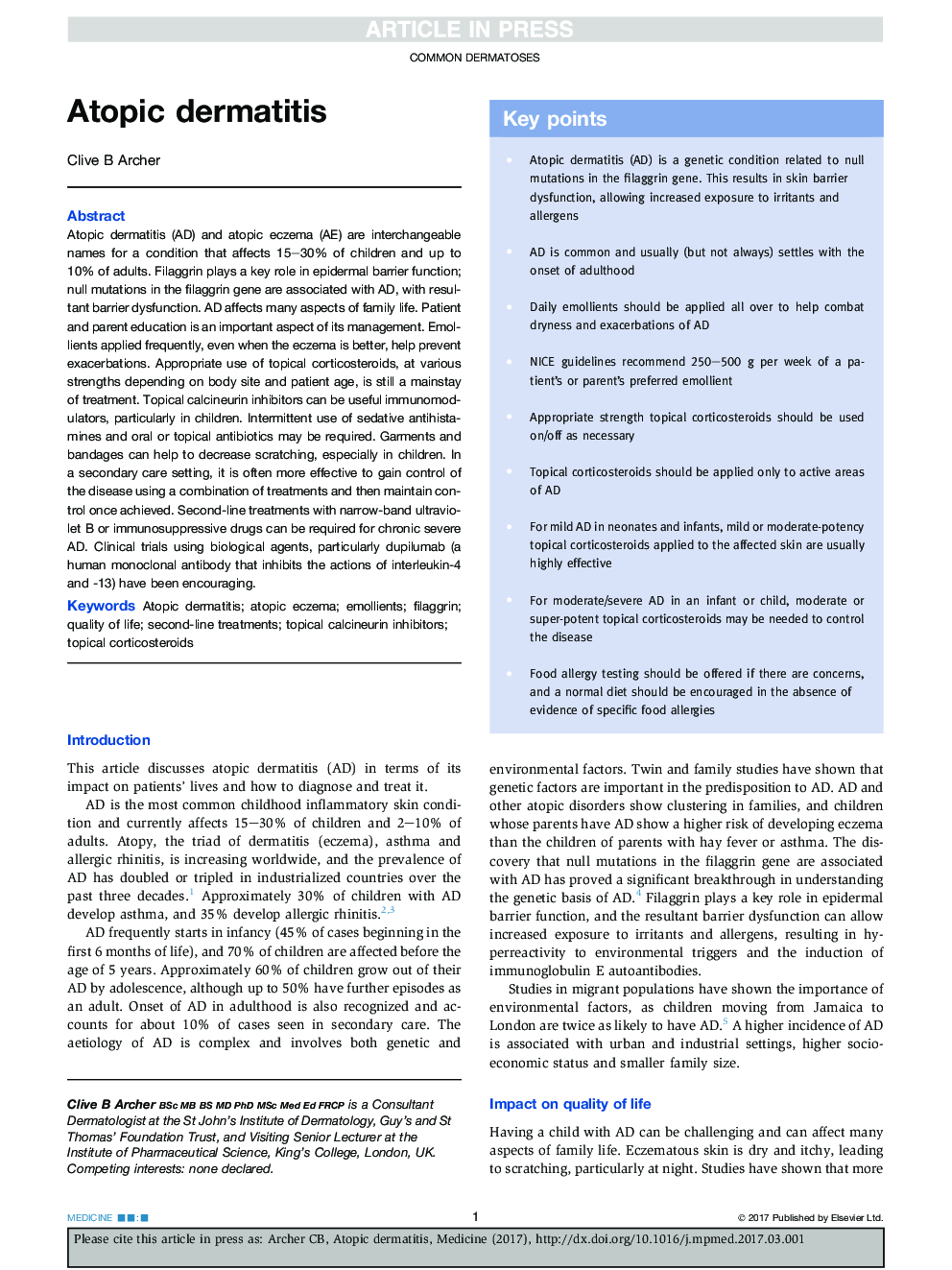| Article ID | Journal | Published Year | Pages | File Type |
|---|---|---|---|---|
| 5681204 | Medicine | 2017 | 4 Pages |
Abstract
Atopic dermatitis (AD) and atopic eczema (AE) are interchangeable names for a condition that affects 15-30% of children and up to 10% of adults. Filaggrin plays a key role in epidermal barrier function; null mutations in the filaggrin gene are associated with AD, with resultant barrier dysfunction. AD affects many aspects of family life. Patient and parent education is an important aspect of its management. Emollients applied frequently, even when the eczema is better, help prevent exacerbations. Appropriate use of topical corticosteroids, at various strengths depending on body site and patient age, is still a mainstay of treatment. Topical calcineurin inhibitors can be useful immunomodulators, particularly in children. Intermittent use of sedative antihistamines and oral or topical antibiotics may be required. Garments and bandages can help to decrease scratching, especially in children. In a secondary care setting, it is often more effective to gain control of the disease using a combination of treatments and then maintain control once achieved. Second-line treatments with narrow-band ultraviolet B or immunosuppressive drugs can be required for chronic severe AD. Clinical trials using biological agents, particularly dupilumab (a human monoclonal antibody that inhibits the actions of interleukin-4 and -13) have been encouraging.
Keywords
Related Topics
Health Sciences
Medicine and Dentistry
Medicine and Dentistry (General)
Authors
Clive B. Archer,
